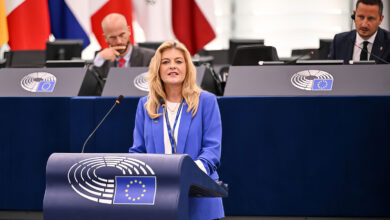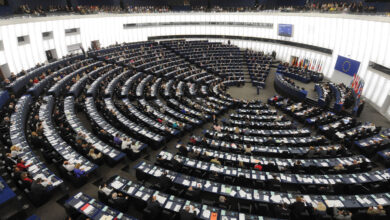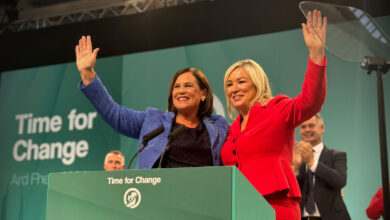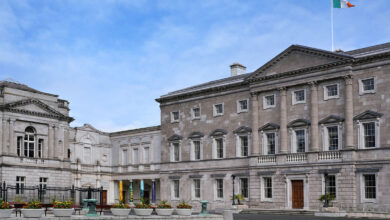NAMA’s project eagle
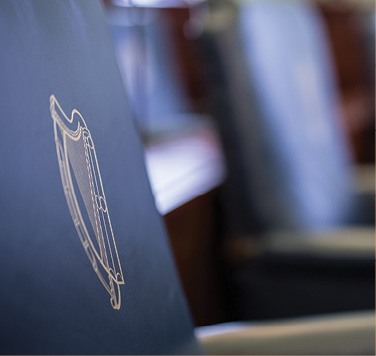

In the wake of the Irish Comptroller and Auditor General’s report into the sale of NAMA’s Project Eagle portfolio, Northern Ireland’s deputy First Minister, Martin McGuinness, appeared before the Dáil’s Public Accounts Committee.
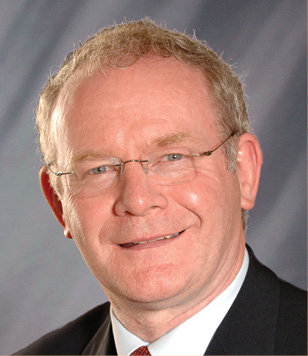 The report, which was published in September, found that the sale of the Project Eagle portfolio, the name given to the 850 properties and development lands, mostly in Northern Ireland, resulted in the probable loss of £190 million.
The report, which was published in September, found that the sale of the Project Eagle portfolio, the name given to the 850 properties and development lands, mostly in Northern Ireland, resulted in the probable loss of £190 million.
The sale of the portfolio has been shrouded in controversy from the outset. TD Mick Wallace alleged that the eventual sale to New York investment firm Cerberus had led to Belfast law-firm Tughans having £7 million in a bank account reportedly earmarked for a Northern Ireland politician. Loyalist blogger Jamie Bryson’s appearance before Northern Ireland’s Finance Committee suggested that there was at least five people set to receive payment on completion of the deal.
Other key findings highlighted in the C&AG report were:
- NAMA had not previously considered the bulk sale of the portfolio until interest was expressed from PIMCO in 2013 and despite the complexity of the portfolio, did not seek formal external expert advice in relation to the strategy;
- two reports to the NAMA board valuing the Project Eagle loans underestimated their value
- PIMCO withdrew, as opposed to being removed from the bidding process after revealing the “finder’s fee arrangement” which is being investigated by the National Crime Agency; and
- days after NAMA dropped its reserve price to £1.23 billion, Cerberus offered £1.24 billion and the only other bidder, Fortress, offered £1.075 billion.
NAMA dismissed the report as “fundamentally unsound and unstable”, but the report prompted a special work programme by the Public Accounts Committee, including hearing oral evidence from a range of witnesses, on both sides of the border.
Peter Robinson, the then First Minister of Northern Ireland, has not agreed to appear before the Committee despite being named as a witness. Mr Robinson did not reply to an original request to appear before the Committee but after a second invitation was couriered to his home address, he released a statement saying he was not answerable to the PAC but added he “would want to be helpful”.
Martin McGuinness’ evidence before the Committee centred largely on his claims that he was left in the dark by the DUP.
“The question regarding this process starts with Sammy Wilson, the then Minister of Finance and Personnel. He never communicated with me at any stage anything to do with the sale of Project Eagle. In my view, all of his communications were through Peter Robinson. Sammy Wilson and Peter Robinson are members of the DUP so this was something they kept to themselves very closely. As a result of that, I found myself at a considerable disadvantage,” he told the Committee.
McGuinness stressed that at the period of time, the Stormont institutions were close to collapse over the failed Maze project and working relationships between Sinn Féin and the DUP were at an all-time low.
Pointing out that he had been excluded from the conversations by Peter Robinson, he added: “There was nothing in my head that suggested that there was wrongdoing by anybody regarding what has since transpired…There were no bad thoughts in my head at the time of this business other than I thought it was highly irregular that the meetings that had taken place were handled in the fashion they were. I understood it from the DUP’s point of view. Relationships were appalling, which presented a massive difficulty that lasted for quite some time until we reached the achievement of the Fresh Start agreement at the end of last year.”
Responding to claims that he had displayed a “wishful ignorance” over NAMA, McGuinness said: “That I was not interested in becoming involved in the Project Eagle sale because it was toxic for Sinn Féin. That is total and absolute rubbish.”

